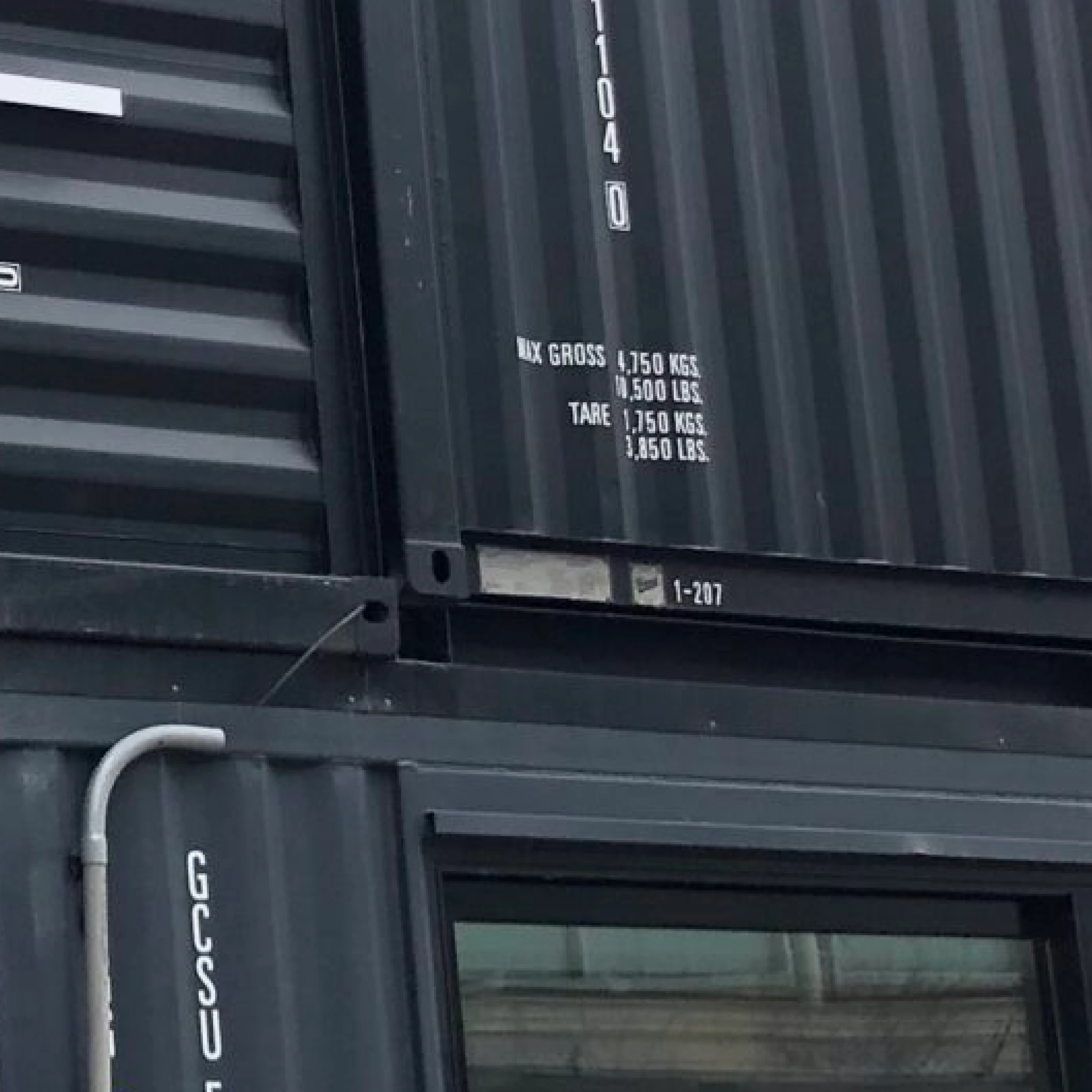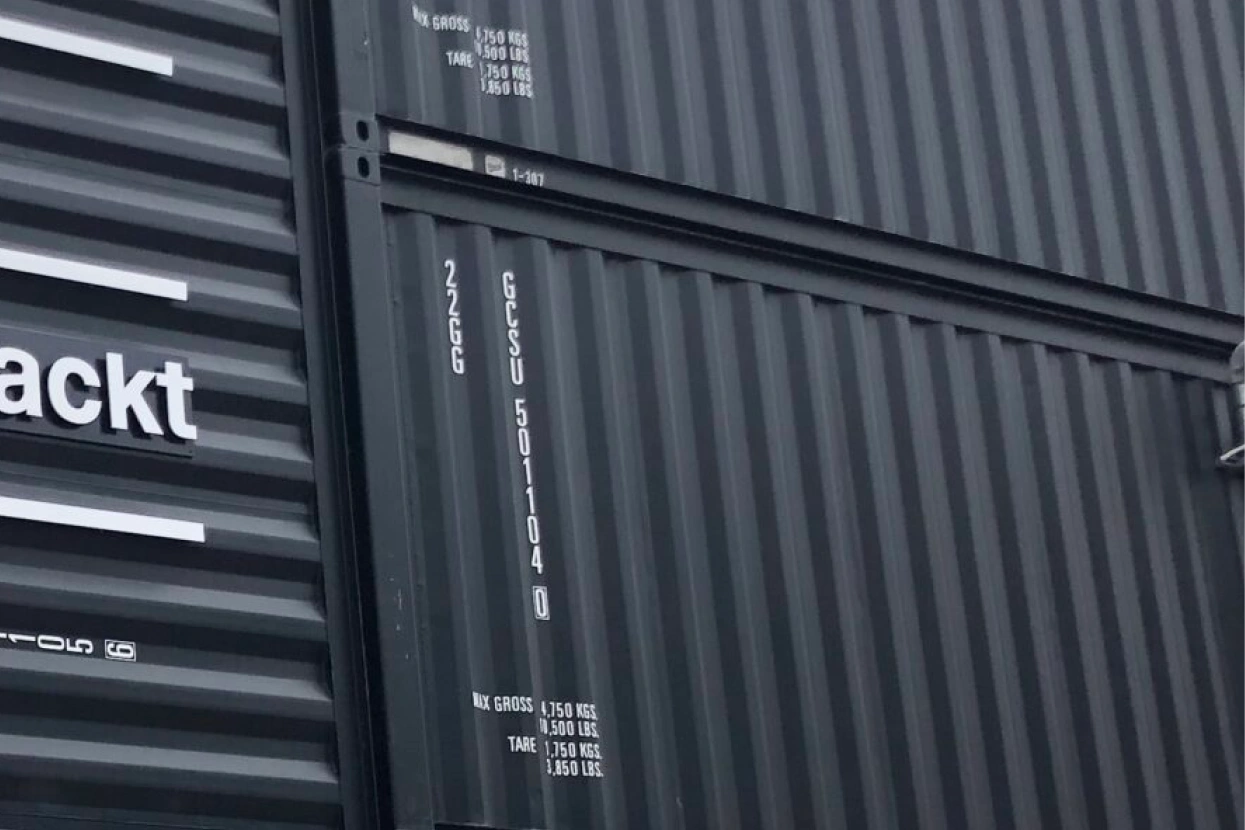Storm Shelters Made from Shipping Containers: A Safe and Durable Solution


In recent years, the use of shipping containers as storm shelters has gained popularity due to their sturdiness and versatility. This innovative solution offers a safe haven during severe weather conditions, all while being environmentally friendly and cost-effective. In this blog, we'll explore the benefits of using shipping containers as storm shelters, the construction process, and some real-life examples of these unique structures.
Understanding the Need for Storm Shelters
Storms can cause significant damage and pose a threat to safety. Understanding the importance of having a reliable storm shelter can help individuals and communities prepare for severe weather events.
In many regions, storms can strike unexpectedly, often leading to disastrous outcomes. Being unprepared during such times is not just inconvenient; it can also be life-threatening. That is why establishing a safe place to take refuge is essential. A reliable storm shelter can provide not just protection, but also peace of mind knowing that you have a solid plan in place.
Moreover, communities that promote storm readiness tend to foster a culture of safety. By emphasizing the need for storm shelters, neighborhoods can come together to ensure every resident knows where to go when severe weather looms. This kind of preparedness can save lives and reduce the overall impact of storms on communities, making it imperative for local governments and organizations to prioritize storm shelters.
Failing to recognize the value of storm shelters can lead to tragic consequences. For instance, vulnerable populations, such as the elderly or those with disabilities, may face challenges finding safe refuge in traditional structures. Therefore, understanding the need for shelters is not only about personal safety; it’s also about embracing community resilience.
Why Choose Shipping Containers?
Shipping containers are designed to withstand harsh conditions. Their robust structure offers an excellent level of protection against strong winds and flying debris, making them an ideal choice for storm shelters.
One of the most remarkable aspects of shipping containers is their inherent durability. Constructed to protect cargo during long sea voyages, these containers can endure severe weather and rough handling. When repurposed as storm shelters, they provide a fortified space that significantly lowers the risks associated with extreme weather events.
Beyond their durability, another reason to choose shipping containers is their versatility. These structures can be easily modified to include features that cater to specific safety needs, whether it's reinforced walls or emergency communication systems. Their adaptability also allows homeowners to customize shelters according to their space requirements and preferences, ensuring a unique and efficient design that meets individual needs.
Furthermore, the environmental benefits cannot be overlooked. By repurposing discarded containers, we can reduce waste and lessen our environmental footprint. This sustainable approach aligns with a growing awareness of natural resource conservation, making shipping containers an appealing option for eco-conscious individuals and communities.
The Construction Process of a Shipping Container Storm Shelter
Building a storm shelter from a shipping container involves proper planning and modifications to ensure safety and comfort. This section covers the essential steps in the construction process.
The first step in constructing a shipping container storm shelter is selecting a suitable container. It's essential to choose a container that's in good condition, free from rust, and structurally sound. This will provide a solid foundation for your shelter. Next, it’s crucial to consider the positioning of the container on your property. Ideally, it should be located away from large trees or structures that could pose a risk in severe weather.
Once the container is located, modifications can begin. This may include reinforcing the walls, adding insulation, and ensuring proper ventilation. While many might think a simple metal box is sufficient, comfort during long durations is essential. Adequate ventilation helps maintain air quality inside the shelter, while insulation keeps temperatures manageable during extreme weather conditions.
Additionally, one must plan for entry and exit points. It's vital to create secure, easily accessible doors, as these will serve as both escape routes in case of emergencies and safe access points during storm events. Installing windows can also be beneficial, as they provide natural light and visibility, enhancing the overall comfort of the shelter.
Lastly, consider the internal layout. Many owners opt for simple amenities like seating, storage for essentials, and even basic hygiene solutions. Making the shelter cozy and functional transforms it from just a protective structure into a safe haven during any storm.
Customization Options for Comfort and Safety
Shipping container storm shelters can be tailored to fit personal needs, including insulation, ventilation, and even the addition of amenities to make the shelter more comfortable during an extended stay.
Customization starts with insulation. Given that metal containers can heat up quickly under the sun or feel cold during the night, appropriate insulation material is vital. This could be spray foam, fiberglass blankets, or other specialized insulation materials that keep the temperature regulated. Having an insulated shelter helps residents weather both hot summers and chilly winters, ensuring a comfortable environment no matter the conditions outside.
Ventilation is another key area of customization. Poor airflow can lead to discomfort or health problems during prolonged periods inside the shelter. Many owners choose to install vents and air circulation fans to maintain fresh air. Others go a step further, adding small windows that can also serve to let in light and make the space feel less claustrophobic.
Moreover, amenities can enhance the functionality of a storm shelter. Many opt for foldable furniture for minimal space usage, allowing room for much-needed supplies or emergency kits. Adding a small kitchenette or an outdoor shower area can greatly improve the livability of these shelters, especially for families needing to stay inside for longer durations.
Thinking about comfort and safety encompasses even more, like installing a first-aid kit or even a small generator for power needs. When making the shelter feel more like home, the experience in such an atmosphere can transition from mere survival to a more manageable and hopefully less stressful situation.
Real-Life Examples of Shipping Container Storm Shelters
There are various successful implementations of shipping container storm shelters across the country. This section highlights some inspiring examples and the impact they've had on their communities.
For instance, in a small town in Texas, a group of local residents banded together to convert several shipping containers into a community storm shelter. The effort not only provided a robust option against the ever-more common storms but also fostered a sense of unity among the residents. People were not only participants in building the shelter but also took initiative in organizing community drills to ensure everyone knew how to safely utilize the shelter during severe weather.
Similarly, a non-profit organization in Florida transformed shipping containers into emergency shelters for their underserved communities, ensuring that those who may lack the resources to build their own had access to safe refuge. This project didn’t just help people during storms; it also raised awareness on the importance of disaster preparedness, encouraging neighbors to look out for one another.
In another extraordinary case, a family in Louisiana constructed their own storm shelter from repurposed shipping containers that doubled as a hobby space for their children. This creative approach allowed them to come up with a versatile solution by using the reinforced containers for recreation while also serving as a safe haven during storms, showcasing both practicality and creativity.
These examples underscore the versatility of shipping container storm shelters, demonstrating how different communities have effectively utilized the concept. From individual projects to collaborative community efforts, the future looks promising for shipping container storm shelters as they adapt to meet the needs of various populations.
Maintaining Your Shipping Container Shelter
Once your shipping container is transformed into a storm shelter, proper maintenance is key. Understand the necessary upkeep to ensure its longevity and continued protection.
Regular inspections of your shipping container are vital. Checking for signs of rust or corrosion is the first step in preserving its integrity. Given that containers are often exposed to elements, identifying wear and tear early can prevent bigger problems down the line. When rust appears, it can be managed effectively with rust inhibitors and sealants, ensuring the container remains a safe refuge.
Additionally, it’s important to maintain the interior. Cleaning the shelter regularly prevents mold and pests from taking hold. Keeping emergency supplies organized and checking expiration dates on food or medical supplies ensures preparedness no matter when bad weather strikes. A clean and organized shelter also creates a more pleasant atmosphere, which can ease stress during emergencies.
Also, remember to assess any installed amenities. Checking on the functionality of ventilation systems and insulation should be conducted periodically, especially after severe weather. Keeping these systems in top shape is essential for maintaining comfort and safety.
Finally, have a ready plan for seasonal preparations. Before storm season approaches, reviewing your shelter's readiness condition is crucial. It shouldn't just be an afterthought; dedicating time to prepare ensures you remain proactive rather than reactive when storms are imminent.
The Future of Storm Shelters
Utilizing shipping containers as storm shelters is not only a practical decision but also an environmentally conscious one. Their durability, cost-effectiveness, and quick construction make them an ideal choice for those seeking safety during storms. As more people discover the benefits of this innovative solution, it’s likely that shipping container storm shelters will become a popular choice for communities looking to protect their residents and infrastructure.
Need some more inspiration?
Check out our recent projects





